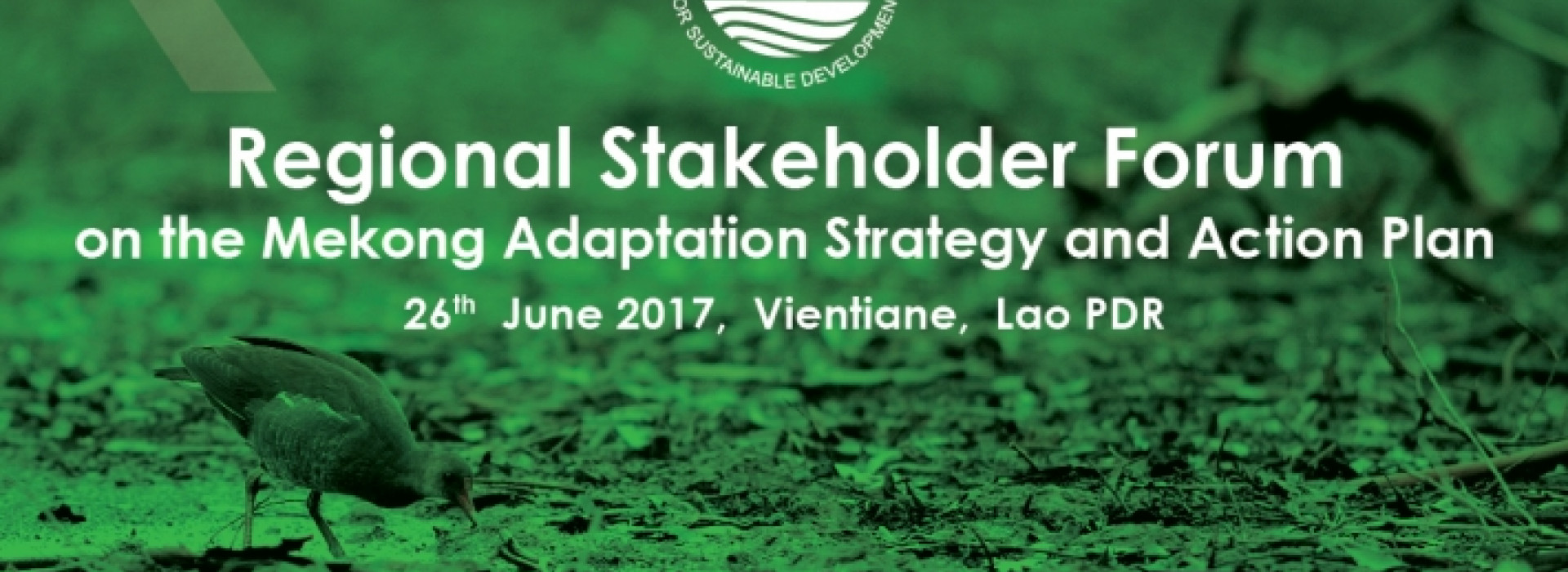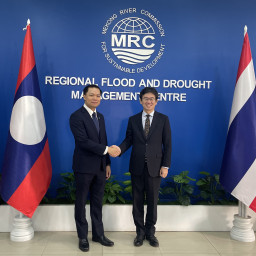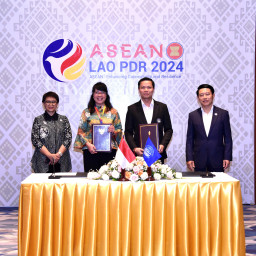MRC’s Regional Stakeholder Forum on the Mekong Adaptation Strategy and Action Plan seeks inputs
26 June 2017, Vientiane Capital, Lao PDR – Around eighty participants from various stakeholder groups gathered in Vientiane Capital, Lao PDR for the Mekong River Commission’s (MRC) Regional Stakeholder Forum on the Mekong Adaptation Strategy and Action Plan.
The forum provided an opportunity for civil society, non-governmental and governmental organizations, regional and international groups to comment on and make suggestions on the draft of the Mekong Adaptation Strategy and Action Plan (MASAP). The participants also discussed seven strategic priorities including mainstreaming climate change into regional and national policies, programs and plans; and enhancing regional and international cooperation.
The participants then proposed recommendations to improve and perfect the action plan, as well as an effective coordination mechanism for implementing the strategy.
Climate change is a fundamental threat to sustainable development and the fight against poverty. It amplifies current environmental threats that weakens ecosystem resilience, and in turn have spiraling consequences for humans. In the lower Mekong basin, this means more extreme weather events such as typhoons, floods and drought that can affect people’s livelihoods and reduce agricultural productivity.
“The Mekong River Commission has been active, together with other counterparts, in dealing with climate change adaptation needs, since 2009, through the Climate Change Adaptation Initiative” said Mekong River Commission CEO, Pham Tuan Phan. “After eight years of effort, we are proud to introduce the Mekong Adaptation Strategy and Action Plan for climate change that is part of the MRC’s commitment to development of the Mekong basin”.
The Mekong Adaptation Strategy and Action Plan, as part of this initiative, is aimed at strengthening the basin’s resilience and sustainable development. The strategy identifies areas of important transboundary cooperation in coping with climate change, and enhancing the capacity of member countries in implementing their own national strategies.
The MASAP will contribute to ensuring that people, communities, businesses and other organizations are able to better cope with current climate variability and are also able to adapt to future climate changes, preserving gains and minimizing damages.
The development of the MASAP has been a long, laborious process which engaged and involved stakeholders at international, regional, and national levels including experts across various disciplines.
Preparation for the MASAP initiated in 2012, and its formulation process kicked-off at the 2nd Mekong Climate Change Forum on October 2014. Attended by more than 150 participants from various sectors and levels, the forum discussed the roadmap and way forward for the development of the MASAP.
Note to Editor:
The Mekong River Commission is the intergovernmental organization established to promote cooperation on the sustainable management of the Mekong basin whose members include Cambodia, Lao PDR, Thailand and Viet Nam. The MRC acts as a platform for water diplomacy and regional cooperation in which member countries share the benefits of common water resources despite different national interests, and address transboundary pressures in the basin. It also serves as a knowledge hub that promotes regional cooperation and policy-making based on scientific evidence. The MRC is not a supra-national or regulatory body. The commission looks across all sectors including sustaining fisheries, identifying opportunities for agriculture, maintaining the freedom of navigation, flood management and preserving important ecosystems. Superimposed on these are the future effects of more extreme floods, prolonged drought and sea level rise associated with climate change.
The Climate Change and Adaptation Initiative is a collaborative effort among MRC Member Countries to demonstrate and share adaptation strategies. With its emphasis on basin-wide approach, the Initiative ensures that climate change adaptation is harmonized with effective strategies, plans at various levels and is applied at priority locations throughout the basin.
-END-





